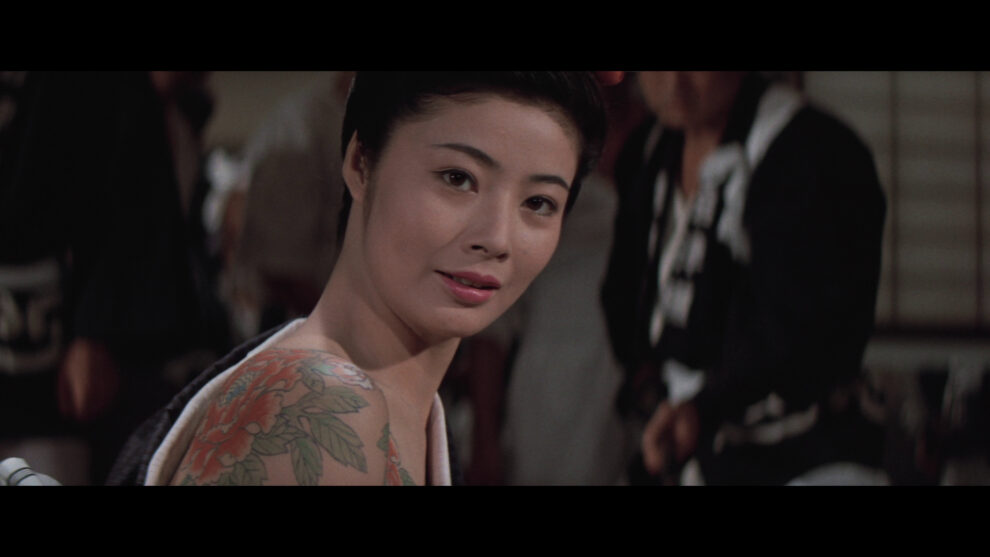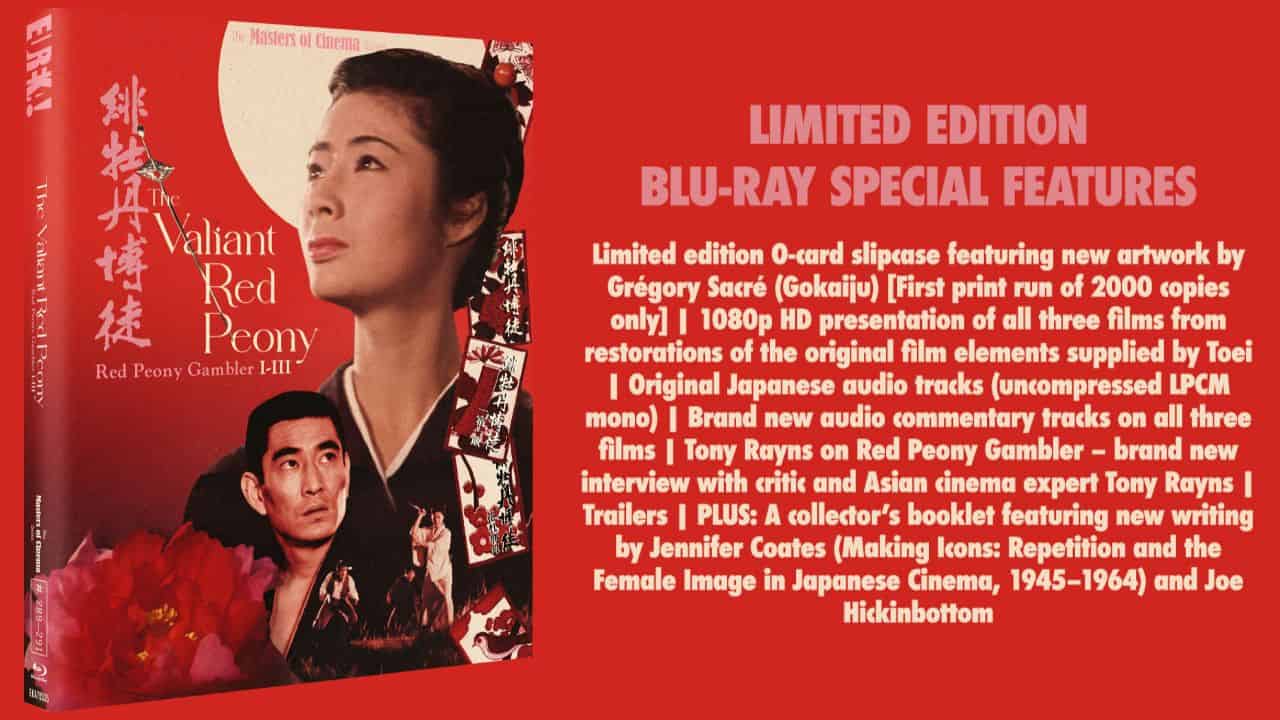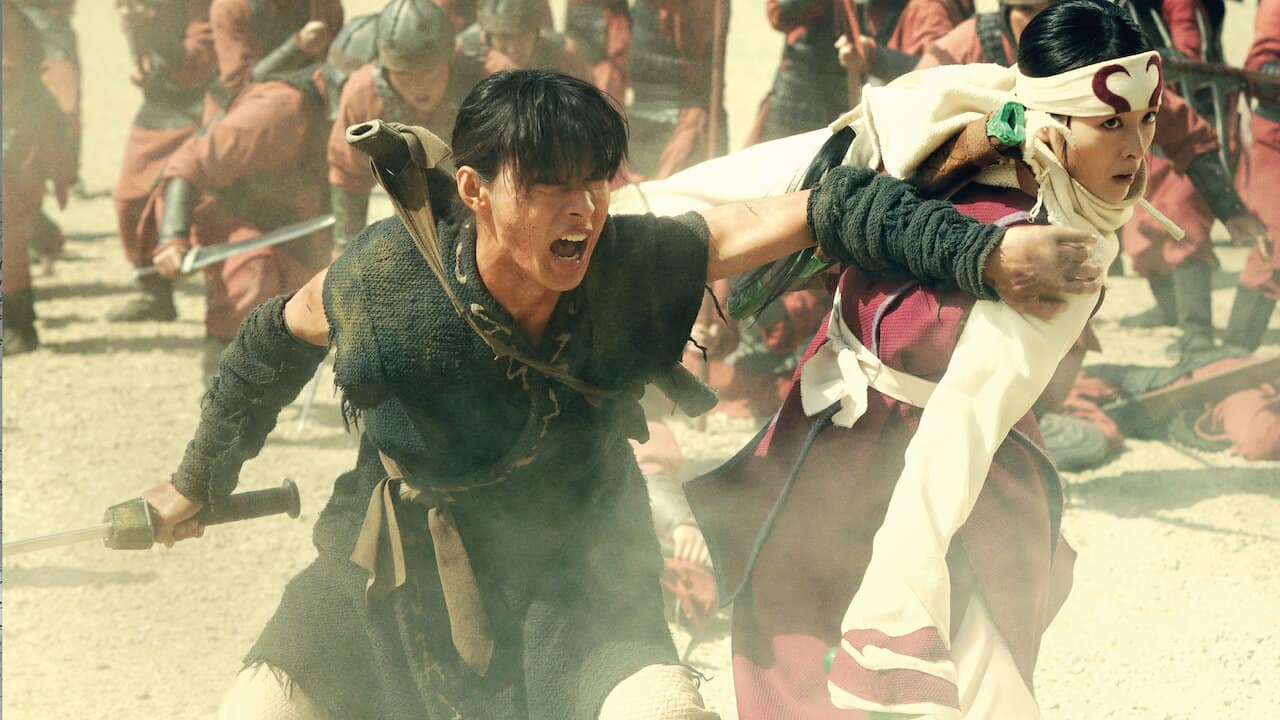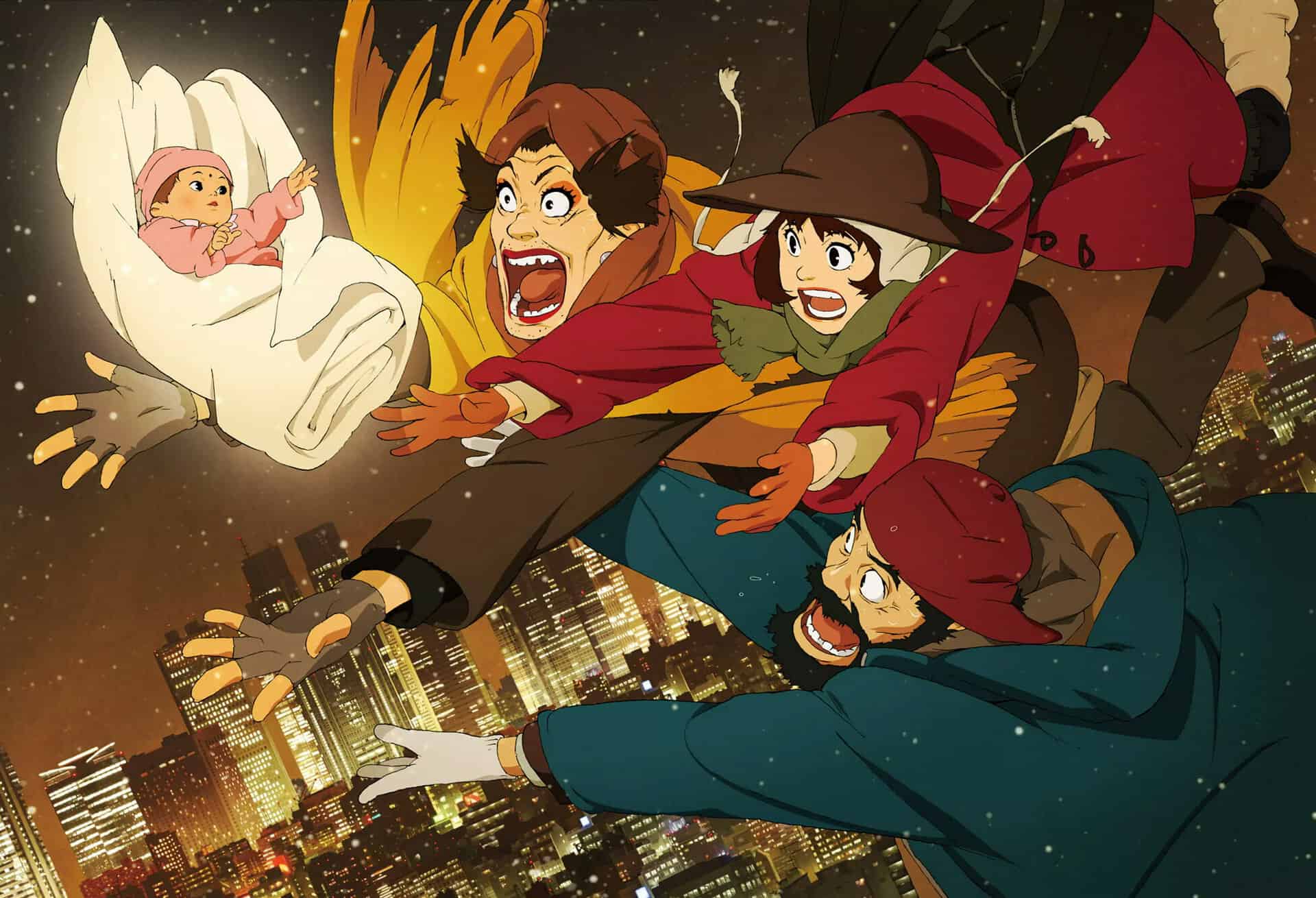The cinematic era of Japanese cinema of the 1950's and 1960's would bring us heroic samurai and yakuza figures. Yet female characters would largely be sat on the sidelines in wallflower roles. Eureka Entertainment bring to blu ray an opportunity to address this with the release of “Red Peony Gambler”. A feature that puts Junko Fuji front and centre as the wandering gambler Oryu.
Buy This Title
on Terracotta by clicking on the image below
After the head of the Yano clan is assassinated, it is left to his daughter Oryu (Junko Fuji) to seek revenge. Dissolving her clan and going on a journey, she encounters Katagiri (Ken Takakura) who comes to her aid in a confrontation. It become apparent that he knows more about her father's death than he lets on and steals a wallet from her that is linked to the killer. The revelation that the wallet belongs to his brother Kakui (Minoru Oki) will ultimately force him to choose between honour and family.
The 1960's saw a popular subgenre in the ninkyo eiga (chivalry) films. These would see the Yakuza as a more honourable institution with its leads dealing with those who sought power and wealth through more dubious means. The character of Oryu is, despite her gender, an archetypical character. Katagiri who in a regular feature would be the lead is reduced to a nominal love interest and Oryu puts familial duty above her attraction to him as convention would dictate. At the conclusion, she starts her journey as a wonderer which completes her metamorphosis into a classical genre figure.
Check also this article
Yet her femininity is never ignored. The choice of small blade as a weapon is ideally suited and unlike others, she is fully prepared to have a gun hidden within her kimono. The other characters make frequent references to her gender as well as frequently underestimating her as a result. It's nicely summed up when one states, “No matter how tough you think you are, a woman is a woman” This chauvinism adds empathy to her when the female characters in this feature are evidently the clearest headed and proactive. Curiously though, the concluding battle doesn't allow Oryu to be the one to take the final revenge. She's there and heavily involved yet it is to Katagiri that this honor falls. He does it out of protection for her as the act of taking a life stays with someone. Quite a powerful act if it wasn't spoilt by her visibly shooting a number of henchmen through the final scenes! So, whilst progressive it cannot quite follow through at its conclusion.
The setting of the Meiji period makes for some interesting aspects of allegory that seep through the narrative. The references to being descended from samurai further emphasizes the strict codes of honour that the characters are bound by. The “good” yakuza by following those notions are therefore considered to be their successors. This play on tradition can also be seen in the stylings of the central villain Kimika. The Meiji period would see a modernization with a lot of western influence and education. Therefore, it is no surprise to see Kimika regularly dressed in a suit whilst the protagonists are in traditional attire. Post World War II, the antagonism towards the west remained and subtle coding like this would not go unnoticed with a local audience.
Visually it is quite a rich film. The opening sequence of Oryu talking to unseen figures shot on a red background is very theatrical, and is furthered by the gambling scene now on a black background. It's a striking opening that feels different to its contemporaries. The rest of the feature uses a mixture of studio sets and locations. There is some effective slow motion in the fight sequences early on. The finale sees a more frenzied approach to the camerawork as the heroes storm the villain's lair. Not quite the frenetic handheld approach that was to come in the 1970's but still makes it stand out from the statelier pace that proceeded it.
Junko Fuji provides an elegant presence in the lead role. She gets to be the more classical female character in the flashbacks with her father trying to keep her from entering the Yakuza world. Once becoming Oryu, she proceeds to have a steel in her that never feels forced. Despite the showy supporting cast, it's a role that never gets undermined or lost in the narrative. Ken Takakura could probably play these roles in his sleep, such was his prominence at this time. Katagiri, as previously mentioned, would probably be a lead in another more conventional piece yet he serves his purpose with a solid presence. Standing out from the crowd in a supporting role is Minoru Oki as his brother Kakui. His decent into villainy is well performed after initially set up as the wayward brother who owes a debt to Katagiri.
The direction is well paced with the drama never getting in the way of the action and vice versa. The narrative builds effectively, with the use of flashbacks serving the purpose of developing the character of Oryu well. Like most genre pieces the narrative relies on coincidence to get the players in position but it's a minor issue here. The tragic elements form part of an expected convention so it never feels as if it is forced. It ultimately sets up a template from which the subsequent sequels would rarely deviate.
“Red Peony Gambler” is a standout piece from a crowded genre. The focus on a female lead gives it a fresh perspective even if it can't quite bring itself to fully break conventions. Excellent performances and direction make for an effective slice of period action\drama. Highly recommended.














